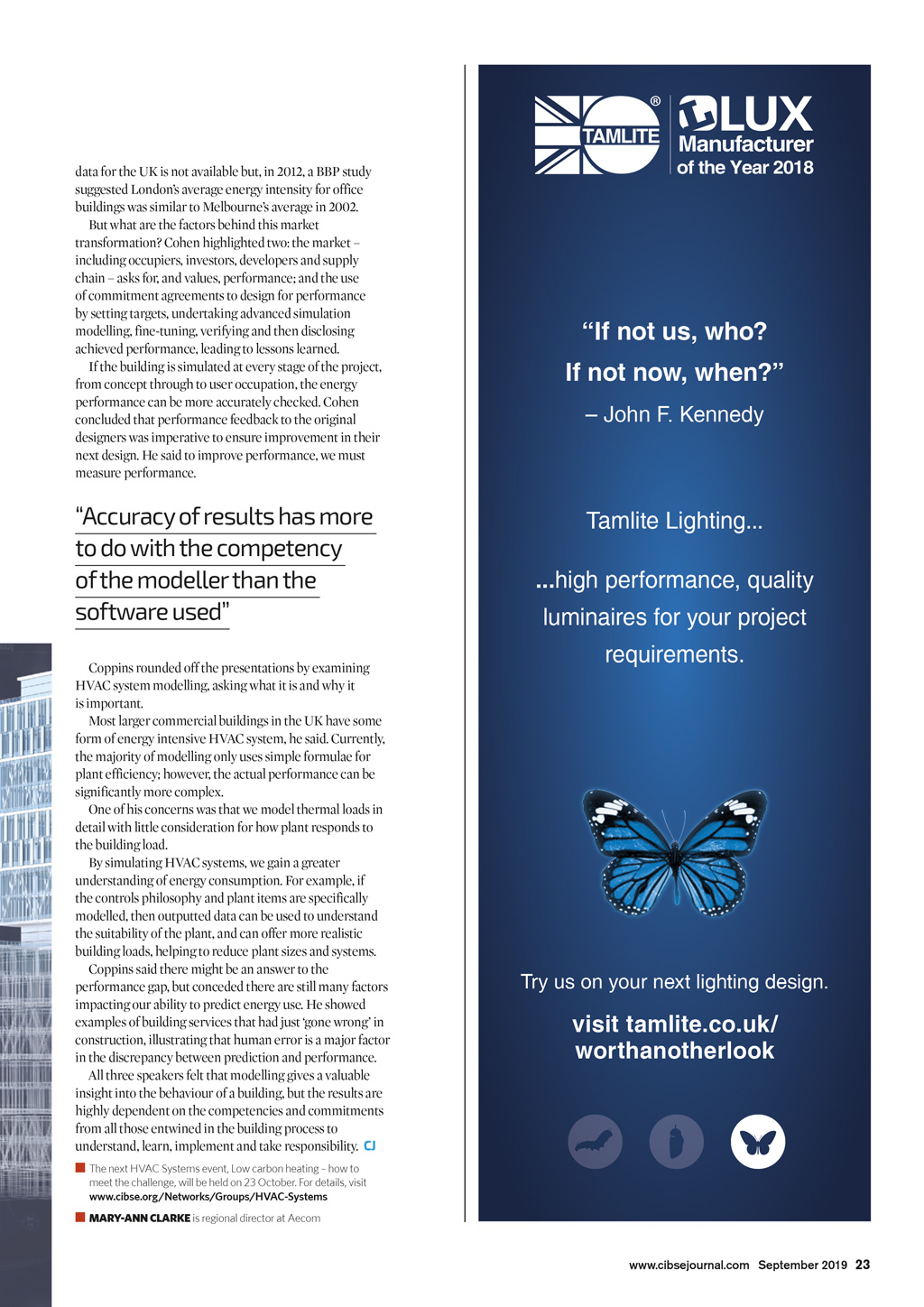




EVENT | BUILDING SIMULATION ROLE MODELS The CIBSE HVAC Systems and Building Simulation groups explored advanced building systems modelling during a discussion at Hoare Lea in July. Aecoms Mary-Ann Clarke reports from the event T Darren Coppins Ant Wilson Robert Cohen hree industry experts shared their views on the benefits and limitations of modelling at a recent event organised by the CIBSE HVAC Systems and Building Simulation groups. Ant Wilson, formerly of Aecom, argued that modelling has limitations because human behaviour is inherently unpredictable, while Verco technical director Robert Cohen said clients can reap the benefit of modelling if buildings are simulated at every stage of construction and performance data is fed back to designers so they can improve subsequent simulations. Built Physics director Darren Coppins concern was that there was little consideration of how plant responds to the building load in models. Ant Wilson was first to the podium and started by asking the audience: Why do we model? There are a number of reasons, and Wilson highlighted the following: informing the design, ensuring compliance, creating thermal comfort, and predicting energy and carbon performance. He said, within the building industry, we have been modelling since the 1960s, when solar simulation was used to produce an array of results, one of which might be right, but the rest of which were likely to be wrong. Moving towards nearly-zero energy building, building performance modelling has become an inseparable part of building and plant design, but Wilson questioned the quality of the models we create. He suggested that accuracy of results had more to do with the competency of the modeller than the software used. He added that the more accurate the data you put in, the more accurate the result you will get out. He looked at the ideal scenario a perfect model, created by a competent modeller, with accurate data. So why do our buildings still not perform as predicted? Wilson likened the problem to car emissions, and why the amount of fuel used by different makes and models was so different from the manufacturers official figures. He suggested that it was, in fact, the driver and the way they drove the car who had control of the cars emissions. Wilson then questioned whether we operate buildings in the predicted way they have been modelled. Perhaps not, he said, and this might be because the models are unable to predict human behaviour. Measure to improve Cohen felt passionately that we might learn a thing or two from Australia. Could this be the answer to how to close the performance gap between model and building? By following the process in a Nabers Commitment Agreement, Australian teams can now routinely achieve in-use operational energy performance ratings in line with the predictions of the design stage models, he said. He demonstrated how, since 2002, by delineating, measuring and disclosing base building operational energy performance, new Australian office buildings were reducing their annual energy use year on year. The least efficient new office building now has half the energy intensity of its peer in 2002, while the most efficient is five times less energy intensive. It is striking that equivalent 22 September 2019 www.cibsejournal.com CIBSE Sep19 pp22-23 HVAC group.indd 22 23/08/2019 15:11